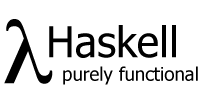|
|
Chess
|

|
Overview
|
One of my interests has been developing a chess game with a decent AI.
I decided to try to build a chess game as my first project in learning
the programming language
Haskell.
I have gone through three iterations of a chess engine so far. The first
chess engine contained a hodge-podge combination
of different move considerations, and it chose the final move based on a
preference of available moves. This engine doesn't look into the future at
all, it simply looks at the moves available, and what pieces it can take
and what pieces can be taken. Pretty easy to beat. The code for it
can be found
here.
The second engine is more sophisticated and provided a much better
opponent.
It uses a branching tree to look at and weigh games leading off of
each move available to the computer. I kept up some documentation about
it, describing how it worked and how I got it to work on a cluster of
obselete desktops running FreeBSD. The documentation is available
here.
The third, and current, iteration of the chess engine builds on the
successful elements of the second chess engine, but increases performance,
allowing the engine to search further than the last and present more of
a challenge.
The biggest improvements are constructive discovery of the valid moves
for pieces, which seems to have increased performance by around eight
times, and an implemenation of the alpha-beta pruning algorithm, which allows
many branches in the game tree to be ignored, saving considerable computation
time. The code for it can be found here.
|
Features
|
The game contains a variety of interesting features that were fun to implement
and add to the accessibility of the game for beginners:
-
Drag and drop
-
The game is played by using HTML 5 drag and drop. Click and hold on a piece,
move it to another square, and let go of the mouse button. This registers
your move.
-
Valid move highlighting
-
Hovering the mouse over a piece highlights in yellow the valid squares that that
piece can move to.
-
AI move data
-
Some basic data for each move the AI had available to it is displayed. The algebraic
notation of each move is hoverable, showing the move on the board. The computed evaluation
of the move is shown, as well as the number of boards evaluated and the number of branches
skipped by the alpha-beta algorithm.
-
Play for me
-
You can have the computer choose what it believes is the best move for you. This also
allows you to watch the computer play itself.
-
Analyze my play
-
You can use the AI to evaluate the move that you picked and suggest other moves that it
believes are better.
|
Current Engine
|
Play now!
|
|




|





